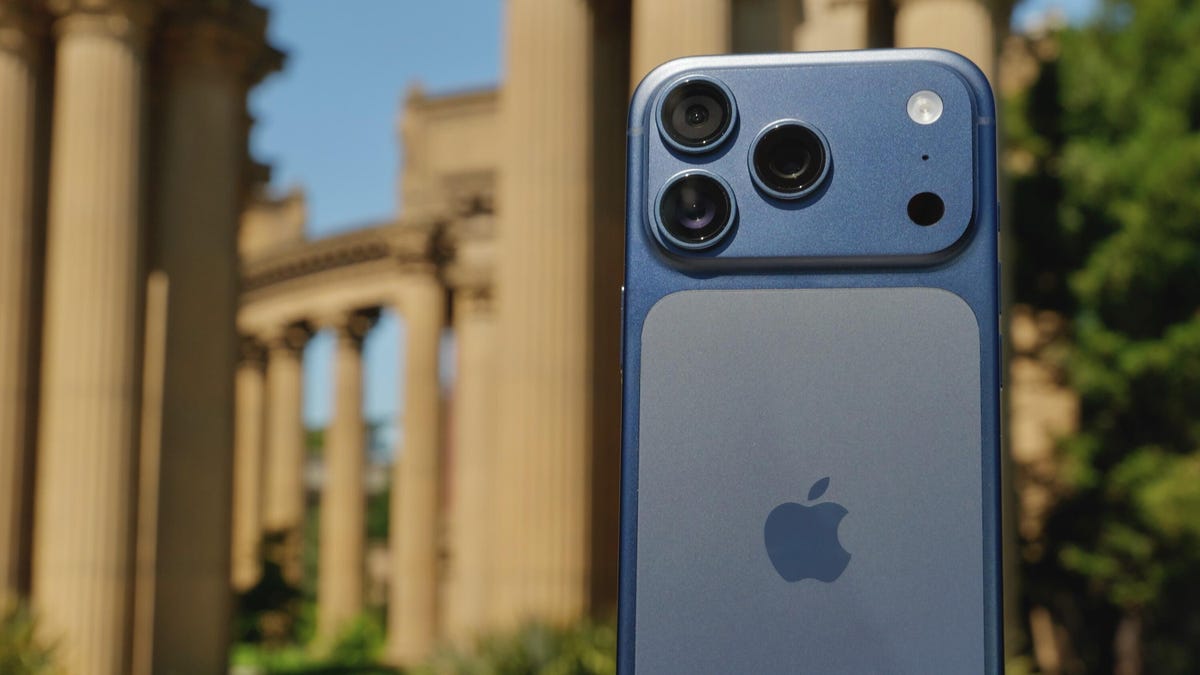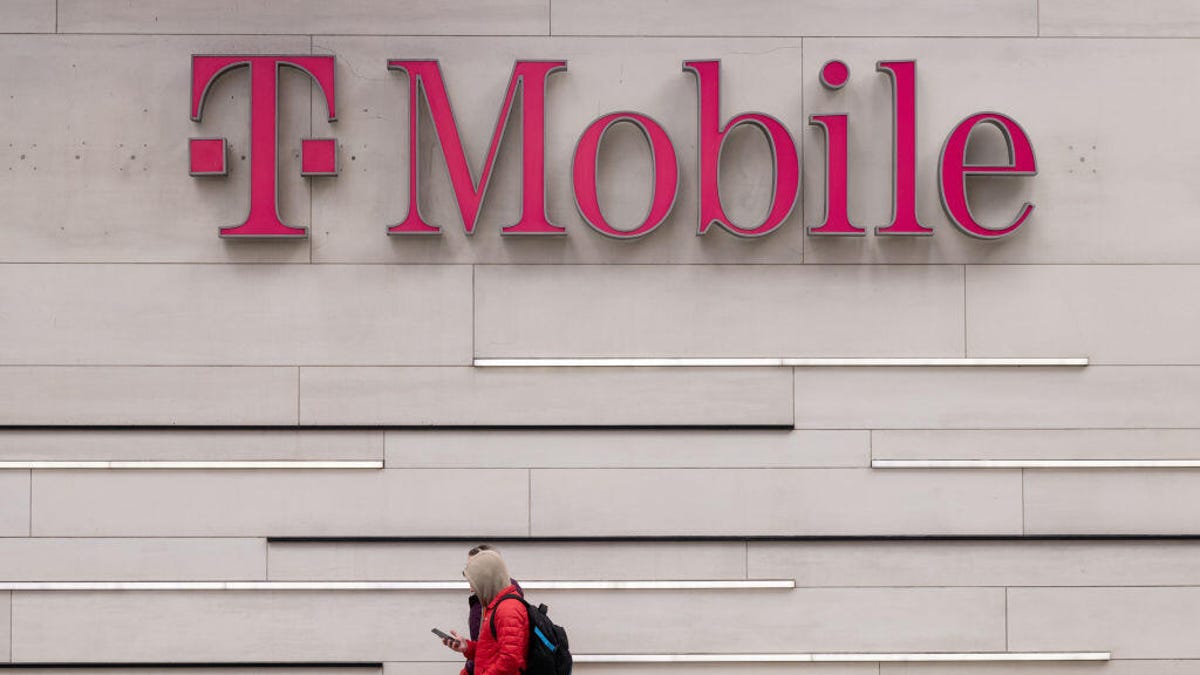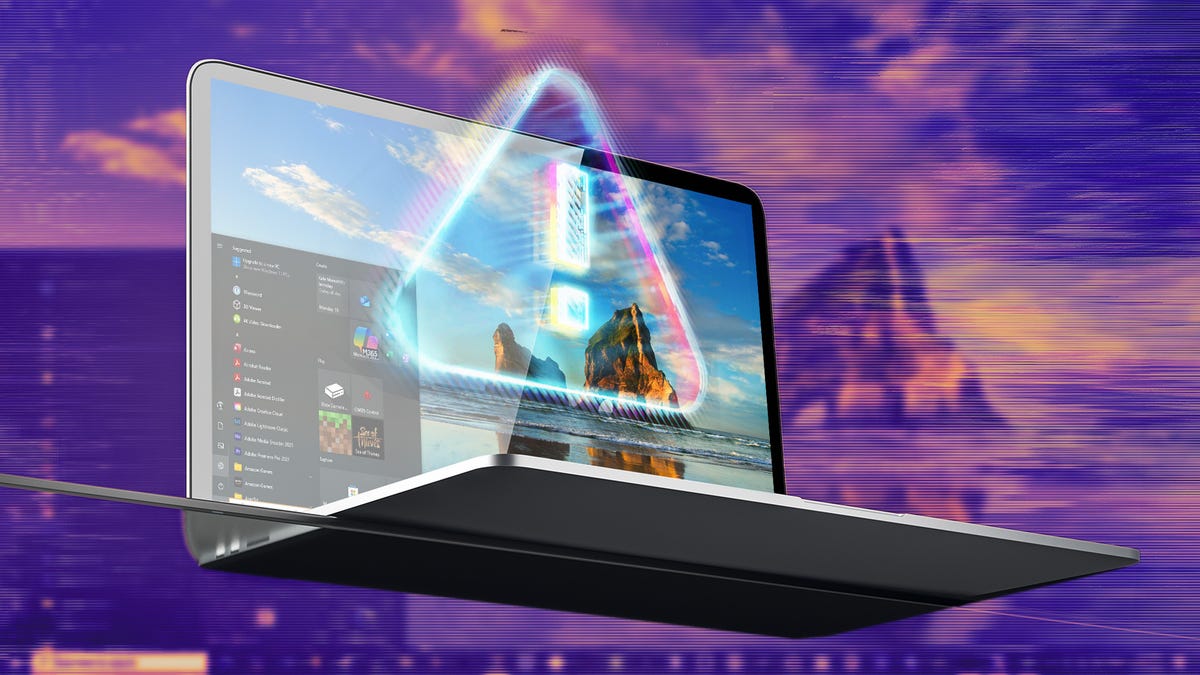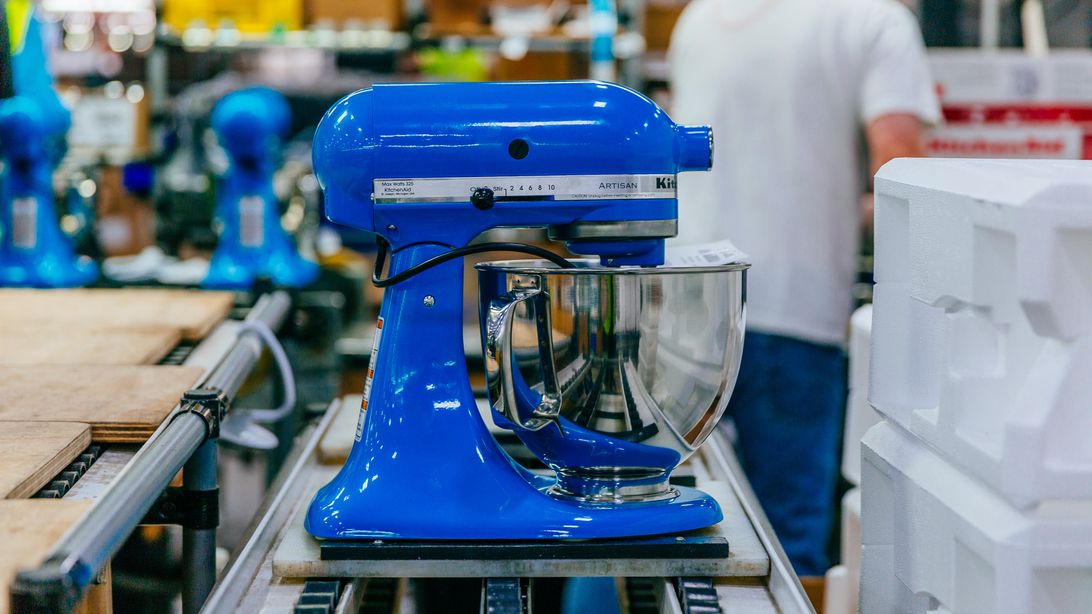Technologies
iPhone 13 event: How to watch Apple’s big announcement tomorrow
Apple’s Sept. 14 event looks like it’ll be the launch of its iPhone 13 lineup, among other announcements.

This story is part of Apple Event, our full coverage of the latest news from Apple.
We don’t yet know exactly what Apple will be launching with its «California streaming» event tomorrow, September 14, but we suspect we’ll see the next iPhone, likely called the iPhone 13, and a new Apple Watch Series 7 (we may also see the rumored AirPods 3). The event, which will be held virtually, might show a new iPhone design along with improvements to the camera and other specs. Apple hasn’t discussed its plans for the devices, aside from a mention of four new iPhones in a filing with the Federal Communications Commission.
The most dramatic change for the new iPhones, aside from better cameras that Apple always tends to offer, is said to be the capability to make calls and send texts in emergencies when there’s no cell coverage. Generally, though, they’re expected to still rely on 5G wireless technology for day-to-day connectivity.
The iPhone 13 comes a year after one of Apple’s most successful launches, with the 5G-powered iPhone 12. The device offered the first major revamp of the iPhone’s design since 2017, when Apple introduced its $1,000 iPhone X, with its new face-unlocking design and better screen technology. One survey conducted before the iPhone 12 announcement from Decluttr, a device recycler and reseller, found that a «staggering» 53% of respondents planned to buy the new iPhone, touching off what analysts call a «supercycle» of phone upgrades.
Apple did notch an increase in iPhone sales in the three months following the release of the iPhone 12. In January, the company said iPhone sales during the holidays jumped 17% from the previous year, helping to lead the company to its highest recorded revenue and profit ever.
«It is not far from any of our minds that this result caps off the most challenging year any of us can remember,» Apple CEO Tim Cook said in a call with investors after posting the company’s financial results. «It is an understatement to say that the challenges it posed to Apple as a business paled in comparison to the challenges it posed to Apple as a community of individuals, to employees, to their families, and to the communities we live in and love to call home.»
«These results show the central role that our products played in helping our users respond to these challenges,» Cook added.
Though Apple’s likely to offer a compelling upgrade to some customers, it’s happening at a time of turmoil both within and outside the tech industry. For the past year and a half, the pandemic has forced Apple, Microsoft, Sony and many other tech companies to hold events online.
The virus has upended billions of people’s lives around the world, forcing entire countries into quarantine in efforts to stop its spread. Those disruptions have also slowed manufacturing and shipping around the world, exacerbating parts shortages that have delayed production of new computers, cars and video game consoles.
Apple so far has been able to keep products largely in stock, analysts say, due in part to the company’s savvy management of its supply chain.
While the iPhone will be a key product we see at Apple’s event this year, and likely what most people focus their attention on, the company’s expected to have other devices to show off. Those include new Mac computers with upgraded chips and new iPads.
When is the Apple event?
Apple’s online-only event will be on Tuesday, Sept. 14 at 10 a.m. PT, which is 1 p.m. ET, 6 p.m. BST and Sept. 15 at 3 a.m. AEST. (Sorry, Australia.)
Where can I watch Apple’s livestream?
You’ll be able to stream Apple’s event straight from the company’s website. Meanwhile, we’ll be reporting on the event live here at CNET.
What can we expect, besides the iPhone 13 launch?
Apple’s digital events are fast paced and slickly produced. And they throw in at least one or two jokes to keep you entertained. Maybe they’ll even make a Mamas and Papas joke, but don’t bet on it.
Technologies
Apple Gives a Reason for the Reports of Terrible iPhone 17 Scratches
If you’ve seen scratched iPhone 17s, Apple says it’s just residue from their old display stands.

You may have missed it, but the internet had a collective meltdown about the brand-new iPhone 17 Pro, Pro Max, and iPhone Air demo units looking scratched up in stores. We finally have an answer. And no, the phones are not, in fact, made of butter.
Apple has officially weighed in on «scratchgate,» and the culprit isn’t a design flaw — it’s grimy display stands. Apparently, old and worn-out MagSafe holders were rubbing off on the backs of the new devices, creating the illusion of a scratch.
The company says that it’s fixing the problematic displays, and the marks can simply be wiped clean. The great iPhone panic of 2025 has ended not with a bang, but with a microfiber cloth.
Not all scratches are equal, and the iPhone 17 Pro and 17 Pro Max’s shape could make the anodized coating susceptible to chipping. People are also reacting to videos from iFixIt and Zach Nelson’s YouTube channel JerryRigEverything. The videos show a possible issue with the anodized coating around the edges of the camera plateau on the iPhone 17 Pro and 17 Pro Max. In his video, Nelson takes a quarter and rubs it along the edge of the camera plateau, causing the coating to chip.
Apple explained to CNET that the anodization on the 17 Pro and 17 Pro Max is just as durable as that on other products. However, over time, it may show small abrasions with normal wear and tear. The company said that its anodization layer is extremely hard and exceeds industry standard guidelines for microhardness.
Don’t miss any of our unbiased tech content and lab-based reviews. Add CNET as a preferred Google source.
Concerns about scratching and durability come on the heels of one of Apple’s biggest iPhone redesigns in years. And while marks and scratches don’t affect how Apple’s phones work, no one wants to have a new $800-plus iPhone look anything but the best it can. The iPhone Air and iPhone 17 Pro units CNET has been testing for the past two weeks don’t show any scratches, chips or scuffs.
If you’re concerned about your new iPhone getting scuffed, you can always buy a case and screen protector.
What is the iPhone 17 Pro made of?
The 17 Pro and 17 Pro Max bodies are made with aerospace-grade 7000 series aluminum, Ceramic Shield and Ceramic Shield 2. The Pro models have an aluminum unibody frame, which means a lot of the back is no longer made of glass.
While some on social media point to the new aluminum chassis as the problem behind the demo-unit damage, multiple videos show the scratches on the Ceramic Shield back panel on the dark blue iPhone 17 Pro (and on the black iPhone Air). There are even videos like this, where a person purposely scratches the back of their new iPhone Air only for the residue to wipe away, mostly clean.
Ceramic Shield, made of ceramic nano-crystals suspended in a glass matrix, covers most of the 17 Pro’s back under the camera bar. Apple says it is four times more resistant to cracks than the back glass on the iPhone 16 Pro.
Then there’s Ceramic Shield 2 on the 17 Pro’s display, which Apple says is three times more scratch-resistant than the Ceramic Shield used on previous iPhone models (and the backs of the new Pro and Air models).
During a briefing for the new iPhone models on the day they were announced, an Apple spokesperson noted that Ceramic Shield is focused on handling drops and resisting cracks, while Ceramic Shield 2 is about crack and scratch durability.
JerryRigEverything’s video and anodizing on the edge
In his iPhone 17 Pro video, JerryRigEverything’s Nelson does his usual array of scratch, bend and burn tests, but calls out a possible issue with the anodized coating on the iPhone 17 Pro’s aluminum.
«Apple forgot to do one really important thing. They ignored an international standard. And it’s going to haunt every single person who buys this phone,» Nelson warns in his video.
The ISO standard Nelson refers to is for decorative anodizing and recommends a specific radius threshold that’s 10 times the thickness of the finish, which apparently the edge around the camera bar doesn’t follow.
Apple explained to CNET that its anodization on the 17 Pro and 17 Pro Max exceeds industry standards and that the edges of the camera plateau have similar characteristics to the edges of the anodized cases on other Apple products.
In his video, Nelson explains that corners, like those around the iPhone 17 Pro’s camera plateau, are weak points for an anodized coating. Think of the anodized layer on the aluminum like nail polish: It gives the phone its color but also helps protect it. If the coating gets scratched too deeply, you can see the actual metal color of the aluminum underneath. More people are likely to notice the damage on darker colors than cosmic orange.
In his video, Nelson shows how the corners around the 17 Pro’s camera plateau are particularly a concern because they lack a chamfer, fillet or bevel, which would typically help protect the edge from having its anodized coating chipped. He acknowledges that Apple used a robust coating and shows how it protects the back against a coin sliding against it or a key scraped on it.
But when he takes the same quarter and rubs it along the edge of the camera plateau, chunks of the finish come off.
I should note that Nelson made all of the scratches on the phone’s body with a knife, which leads me to suspect that someone may have intentionally scratched in-store demo units, in addition to Apple’s explanation about the MagSafe risers.
It could also be that people were holding multiple iPhone display samples one-handed for a photo or video, and that the sapphire crystal covering on the rear cameras rubbed against the back of the other iPhone. Sapphire crystal is second only to diamond in terms of its hardness. As anyone who’s had a retail job knows, in-store display units are often subjected to some of the worst customer treatment.
«I’m a massive fan of this new iPhone design,» says Nelson toward the end of his video. «Less glass and more aluminum is always a good thing.»
iFixIt’s ‘spalling’ iPhone 17 Pro teardown
In iFixIt’s iPhone 17 Pro teardown video, Shahram Mokhtari, the company’s lead teardown technician, confirmed Nelson’s finding of an issue with the anodized coating on the camera plateau’s edges. Mokhtari said the issue isn’t the aluminum unibody but the shape of the phone’s camera bump. The plateau’s sharp edges don’t adhere to the anodized coating, but flat surfaces, like the phone’s back, do.
Under a microscope, Mokhtari drags a hardness tool (equivalent to a penny) across the flat back of the camera plateau. You can see where he dragged, but the anodized coating is still intact. He drags the same tool across the edge of the camera plateau, and the coating chips off, revealing the metal underneath. The technical term for this is spalling.
«When there’s an edge to the oxide layer, like at the edge of the camera plateau, the brittle oxide bears the stress of your keys or coins rubbing against it. And so it spalls,» Mokhtari explains in the video.
He also acknowledges that iFixIt hasn’t seen the same level of vulnerability on the iPhone Air and standard iPhone 17 because their backs are made of Ceramic Shield and glass, respectively.
Are the iPhone 17 Pro and iPhone Air durable?
In short, the iPhone 17 Pro and iPhone Air are durable, yes. But normal wear and tear on iPhone 17 Pro and Pro Max models could cause small abrasions to show. These issues won’t change how the phone operates or is used, but putting a case on the Pro models seems like the only way to avoid any chipping.
The iPhone Air and baseline iPhone 17 don’t seem to have the same issue with spalling that Pro models have because their backs are made of glass.
If you find that your new iPhone is scratched or has some of the anodized coating chipped off, take it back to where you bought it and see if you can exchange it. If those scratches were done deliberately, you’re likely stuck with it.
If you’re worried about your new iPhone getting damaged, the best solution is a case. Luckily, you have plenty of options.
Technologies
T-Mobile Hikes Late-Payment Charge Amid Other Recent Billing Changes
T-Mobile encourages customers to use autopay by offering monthly discounts.

T-Mobile is increasing the fee it charges customers who pay their bills late. Starting Nov. 1, the carrier will raise its late payment fee from $7 to $10, according to updated billing disclosures sent to customers and first reported by The Mobile Report.
The company says the fee will now be the greater of $10 or 5% of the customer’s monthly bill, depending on state regulations. The move represents a roughly 43% increase in the minimum charge and brings T-Mobile more in line with what rival carriers like AT&T and Verizon already assess for overdue payments.
A representative for T-Mobile did not immediately respond to a request for comment.
Read more: T-Mobile Is the New Mobile Network Champ. I Got a Behind-the-Scenes View Into How It Got There
The higher late fee could hit customers with smaller monthly plans the hardest, especially those who don’t use autopay, which is an option T-Mobile promotes by offering monthly discounts. The policy change continues a broader trend of wireless providers tightening payment terms and nudging subscribers toward automated billing as part of cost-control and retention strategies.
T-Mobile has not commented on the reason for the increase, but the change follows other recent billing and plan adjustments as the company continues to streamline operations after its merger with Sprint and amid rising operational costs.
Read more: My First Look at T-Mobile’s Unique Starlink T-Satellite Service Made Me Head Far From Home
Don’t miss any of our unbiased tech content and lab-based reviews. Add CNET as a preferred Google source.
Technologies
It’s Easy to Get Free Extended Security Updates for Windows 10. Just Do This One Thing
Windows 10 support ends on Oct 14. Here’s how to keep access to Windows 10 security updates without spending a dime.

The era of Windows 10 support ends on Oct.14. After more than a decade, Microsoft is prioritizing updates for the most current OS, Windows 11, and stopping security updates for Windows 10.
If updating to Windows 11 isn’t an option, you can snag a year of extended security updates for the prior OS for $30. If you’re on a budget, there’s a free option that will let you keep extended security updates for a year. You’ll just be required to connect your OneDrive account and enable cloud backup.
Getting free updates on Windows 10, which was released more than a decade ago in July 2015, is a pretty big deal. As the most widely used Windows OS, it accounts for just over 53% of installs as of May 2025. Millions of people would be left without security support unless they upgrade. The cloud backup option gives users a choice without costing money.
The only potential issue is OneDrive. Anyone with a Microsoft account gets up to 5GB of storage for free. However, as The Verge points out, some backups may exceed this limitation, requiring users to purchase a monthly or yearly plan. At $2 a month for 100GB of cloud storage, a year of OneDrive still costs less than the $30 for a year of additional security updates, but it may still cause frustration among some customers.
Don’t miss any of our unbiased tech content and lab-based reviews. Add CNET as a preferred Google source.
How to get Windows 10 security updates for free
Per Microsoft’s blog post, there are now three options for those who want to stay on Windows 10 and still receive security updates:
- Use Windows Backup to sync settings to the cloud via OneDrive.
- Redeem 1,000 Microsoft Rewards points. Redeeming those points can buy you one year of security updates.
- Pay $30 for the Extended Security Updates program.
These options are available now. Microsoft began offering its Extended Security Updates program in July. Signing up for this option will guarantee updates until Oct. 13, 2026, although businesses will have the option to purchase up to three years of additional updates. So, this isn’t a long-term solution, but rather gives you more time to upgrade to Windows 11.
It’s been an uphill battle for Microsoft, as people have been reluctant to upgrade their existing hardware. There are myriad differences between the two operating systems, but Microsoft’s string of unpopular decisions, along with Windows 11 compatibility issues, have kept the prior-generation OS around a lot longer than it normally would.
-

 Technologies3 года ago
Technologies3 года agoTech Companies Need to Be Held Accountable for Security, Experts Say
-

 Technologies3 года ago
Technologies3 года agoBest Handheld Game Console in 2023
-

 Technologies3 года ago
Technologies3 года agoTighten Up Your VR Game With the Best Head Straps for Quest 2
-

 Technologies4 года ago
Technologies4 года agoVerum, Wickr and Threema: next generation secured messengers
-

 Technologies4 года ago
Technologies4 года agoGoogle to require vaccinations as Silicon Valley rethinks return-to-office policies
-

 Technologies4 года ago
Technologies4 года agoBlack Friday 2021: The best deals on TVs, headphones, kitchenware, and more
-

 Technologies4 года ago
Technologies4 года agoOlivia Harlan Dekker for Verum Messenger
-

 Technologies4 года ago
Technologies4 года agoMade in the USA: Baseball bats, sticky notes, kitchen mixers and more
